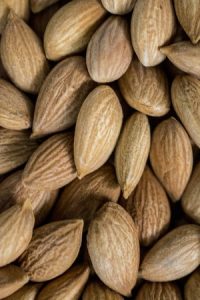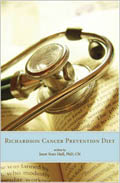
Wouldn’t you like to know that two of the B-Complex vitamins can help in the prevention of Fibromyalgia, aid in cancer prevention, and support recovery from alcohol and drug addiction?
All other animals instinctively know that vitamins B15 and B17 are Nature’s cancer prevention. We can get these two vitamins from natural foods, but they are outlawed in the United States; they are even outlawed from being sold in the B-Complex vitamin supplements, and they are not included in any manufactured foods.
Let’s look closely at vitamin B15. But, shhhh – it’s taboo.
Pangamic Acid
Vitamin B15 is also known as Pangamic Acid. Beyond any doubt, it is a controversial vitamin in America, and we need to ask why? The FDA took Pangamic Acid products off the market over three decades ago.
Interestingly, the FDA has been monitoring the wide range of medical conditions treated with B15 in other countries.
Russia has been the most progressive country to use B15, believing it to be a very important nutrient treating a multitude of symptoms and diseases. Russian scientists have shown Pangamic Acid supplementation can reduce the buildup of lactic acid in athletes, and, thereby, lessen muscle fatigue and increase endurance.
Hum, do you think this vitamin might assist with Fibromyalgia?
Maybe in Russia.
Health Benefits
B15 is used regularly in Russia and other countries for many health issues, including:

- Alcoholism
- Drug addiction
- Aging and senility
- Minimal brain damage in children
- Autism
- Schizophrenia
- Heart disease
- High blood pressure
- Diabetes
- Skin diseases
- Liver disease
- Chemical poisonings
In Europe, vitamin B15 has been used to treat premature aging because of its circulatory stimulus and its antioxidant effects. It can help protect the body from pollutants, especially carbon monoxide. Pangamic acid (and DMG) can support the health of those living in large polluted cities or under high-stress.
But, it’s outlawed in the US. Go figure!
DMG
Dimethyl glycine (DMG) has been used in the United States as a substitute for B15 because it is believed to increase Pangamic Acid production in the body. Dimethyl glycine combines with gluconic acid to form Pangamic Acid. DMG is considered the active component of Pangamic Acid.
Pangamic Acid is found in:
- Whole grains such as brown rice
- Brewer’s yeast
- Pumpkin and sunflower seeds
- Apricot kernels
- Beef blood

How B15 Works
- B15 helps in the formation of specific amino acids such as methionine.
- It plays a role in the oxidation of glucose in cell respiration.
- Like vitamin E, it acts as an antioxidant helping to lengthen cell life through its protection from oxidation.
- Pangamic Acid mildly stimulates the endocrine and nervous systems.
- B15 enhances liver function.
- It helps in the detoxification process.
B15 has been shown to lower blood cholesterol, improve circulation and general oxygenation of cells and tissues, and is helpful for arteriosclerosis and hypertension – some of America’s most common diseases.
It is currently illegal to distribute B15 in the United States, although it was used as a supplement for some time through the 1970s. The most common form of Pangamic Acid is calcium pangamate, but it appears as dimethyl glycine (DMG), the active component hailed in Russia.
Pangamic Acid, let’s call it DMG, is often taken with vitamin E and vitamin A. The average dose of DMG is 50-100 mg. taken twice daily, usually with breakfast and dinner. This level of intake may improve general energy levels, support the immune system, and reduce alcohol cravings, making it very helpful in moderating chronic alcohol problems.
Hum. B15 sounds like a very healthy B-vitamin to me.

To learn more about vitamin B15 and its benefits in cancer prevention, check out my Cancer Prevention Diet book. Learn more about this incredible and powerful vitamin B15.
You have our permission to reprint this article if you attribute us with a live back-link to this article. https://janethull.com/healthynews/
Disclaimer: This article is for informational purposes only, and is educational in nature. The FDA may not have evaluated some of the statements. This article is not intended to diagnose, treat, cure, or prevent any disease. Please discuss with your own, qualified health care provider before adding supplements or making any changes to your dietary program.